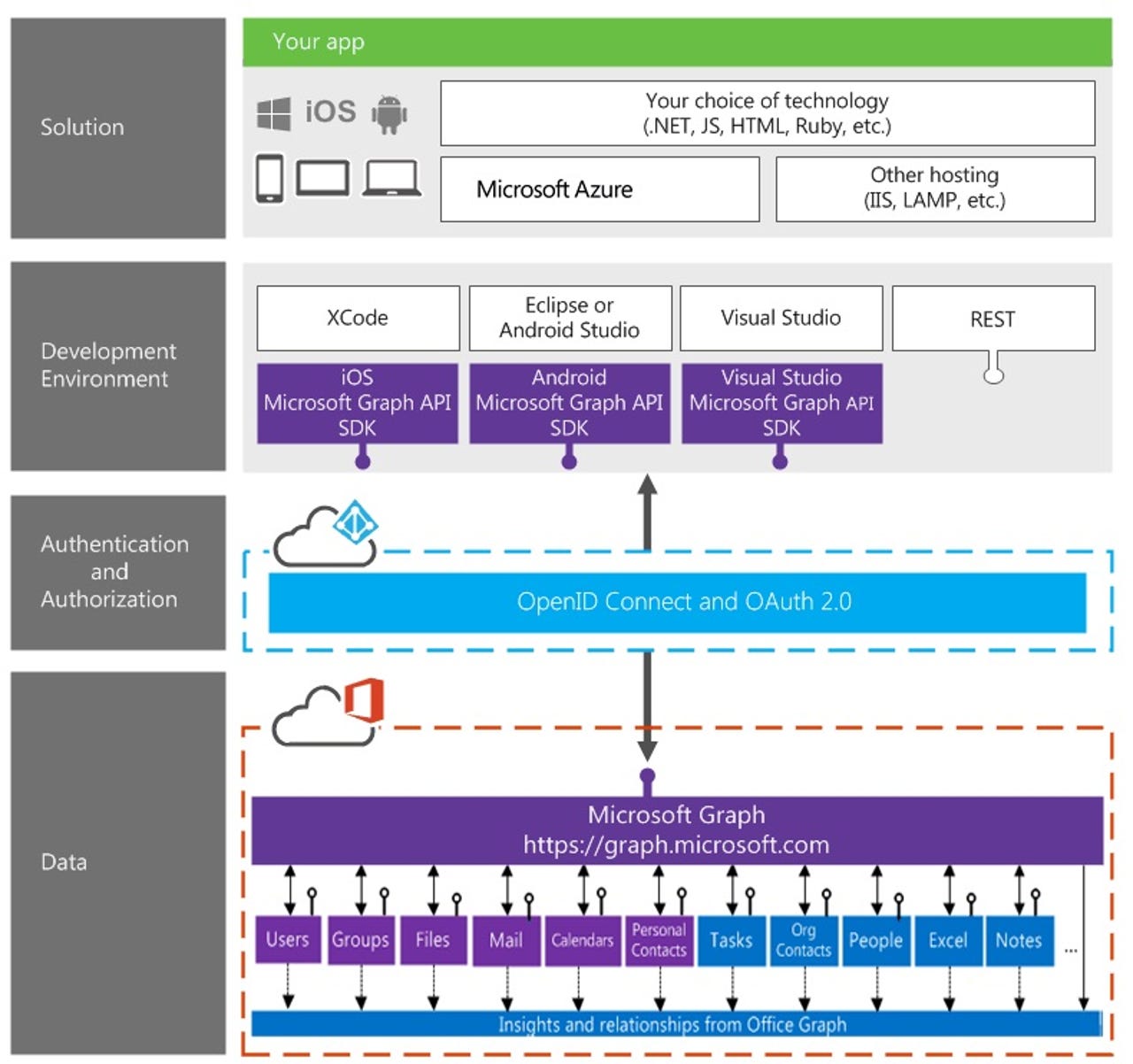Microsoft Graph: A way to build smarter, stickier apps

Showing developers how to build smarter apps is going to be one of the pillars of Microsoft's Build 2016 conference next week.

At the heart of that lesson will be Microsoft Graph, the technology formerly known as the Office 365 Unified application programming interface (API). Microsoft made Microsoft Graph generally available in November 2015, and has been focused on making Microsoft Graph more consumable by developers since that time.
"Microsoft Graph gives you a consistent way to access data and intelligence," explained Yina Arenas, the head of engineering for Microsoft Graph.
Microsoft Graph is core to the Microsoft Office platform, but it also is being adopted by more third-party developers, Arenas said. She said to expect some of these developers and their applications to be showcased at next week's Build show.
The idea behind Microsoft Graph is to make applications smarter, so that they don't require a lot of interim steps to surface contextual data. By integrating with Microsoft Graph, apps will be able (with users' permissions) to access their calendars to suggest meeting times; get data from an Excel file to update a chart with the latest information, and let users know where they are spending their time (80 percent in meetings? Ugh!).
Microsoft Graph also will be key to helping determine the separation between personal and work personnas, so that apps could handle tasks like sorting which pictures belong in a personal OneDrive vs. a OneDrive for Business cloud storage service.
Because Azure Active Directory is the identity provider at the heart of Office 365, users and devices are registered centrally there, enabling information to be exposed that way through the Microsoft Graph.
"This simplifies tremendously the code developers have to write," says Arenas, as the unified REST API and Azure Active Directory mean developers don't have to architect apps to make multiple calls.
Microsoft has been working to get developers to write more applications and extensions that use its Office APIs for years. In 2012, Microsoft developed tools to try to entice developers to write apps for its Office Store.
With the rise of the cloud, Microsoft's emphasis began to shift to providing developers, including those inside the company, with access to cloud resources. Instead of just focusing on providing access to Office data via the Office Graph, which Arenas calls "the brain" of Microsoft Graph, Microsoft is broadening its developer platform to also include data and intelligence.
At its Connect() 2015 event in November, where Microsoft announced general availability of Microsoft Graph, company officials launched several Microsoft Graph elements in preview, including Notifications, software development kits (SDKs), People, Organizational contacts, Office Graph, Planner, OneNote, Converged Auth. flow support, OneDrive Files and Outlook. I wouldn't be surprised to see many of these be moved to general availability at Build 2016.
I bet we could hear more about how Microsoft itself is planning to make Office apps stickier, too, during next week's show, which kicks off March 30 in San Francisco. Microsoft already is working on making email and calendar notifications smarter with Cortana, as well as on incorporating predictive event triggers in Outlook. I'm thinking Microsoft Graph may play in here, as well.